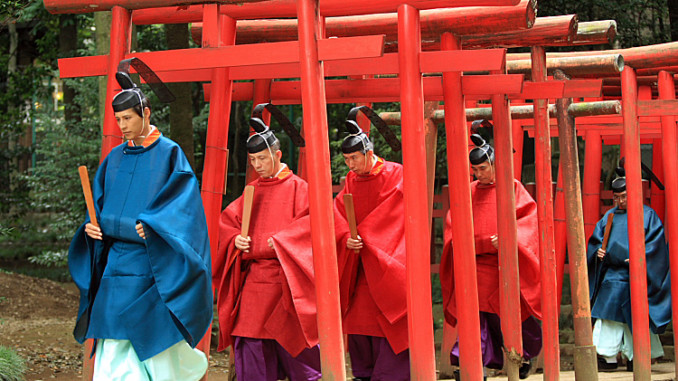The religion of the Shintoist

Shintoism, which roughly means "the way of the gods", is the traditional religion of Japan. It focuses on the relationship between practitioners and a multitude of supernatural entities called kami which are associated with all aspects of life.
Us
Western texts on Shinto commonly translate kami as spirit or god. Neither term works well for the whole kami, which encompasses a wide range of supernatural beings, from unique and personified entities to ancestors to impersonal forces of nature.
Organization of the Shinto religion
Shinto practices are largely determined by need and tradition rather than dogma. While there are permanent places of worship in the form of shrines, some in the form of vast complexes, each shrine operates independently of each other. The Shinto priesthood is largely a family affair passed from parent to child. Each shrine is dedicated to a particular kami.
Four statements
Shinto practices can be summarized approximately from the four statements:
Tradition and family
Love of nature - Kami are an integral part of nature.
Physical cleansing - Purification rites are an important part of Shintoism
Festivals and ceremonies - Dedicated to honoring and entertaining the kami
Shinto texts
Many texts are appreciated in the Shinto religion. They contain the folklore and history on which Shintoism is based, rather than being sacred scriptures. The first date of the eighth century AD, while Shinto itself has existed for more than a millennium before that time. Central Shinto texts include Kojiki, Rokkokushi, Shoku Nihongi and Jinno Shotoki.
Relationship with Buddhism and other religions
It is possible to follow both Shintoism and other religions. In particular, many people who follow Shintoism also follow aspects of Buddhism. For example, death rituals are commonly performed according to Buddhist traditions, in part because Shinto practices focus primarily on life events - birth, marriage, honoring kami - and not on the afterlife theology.